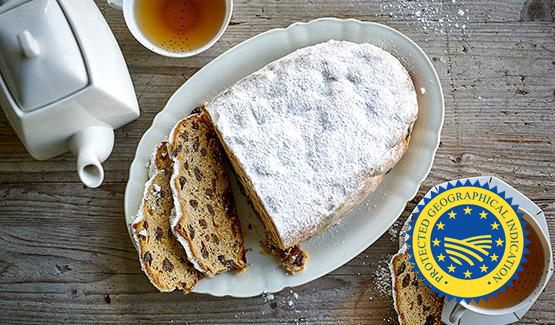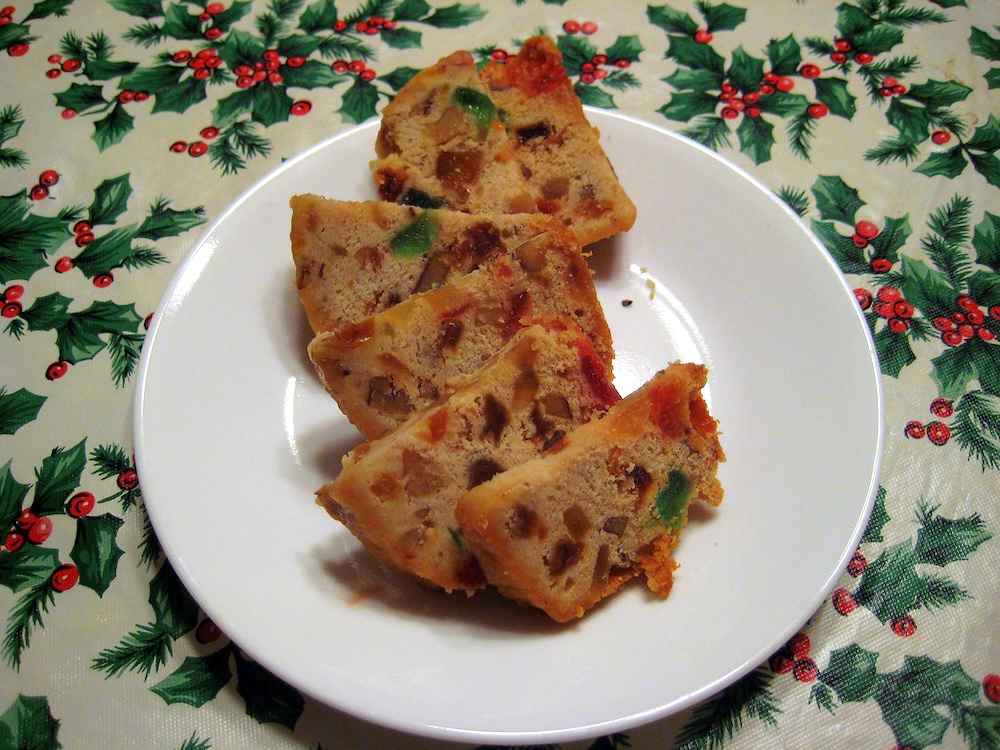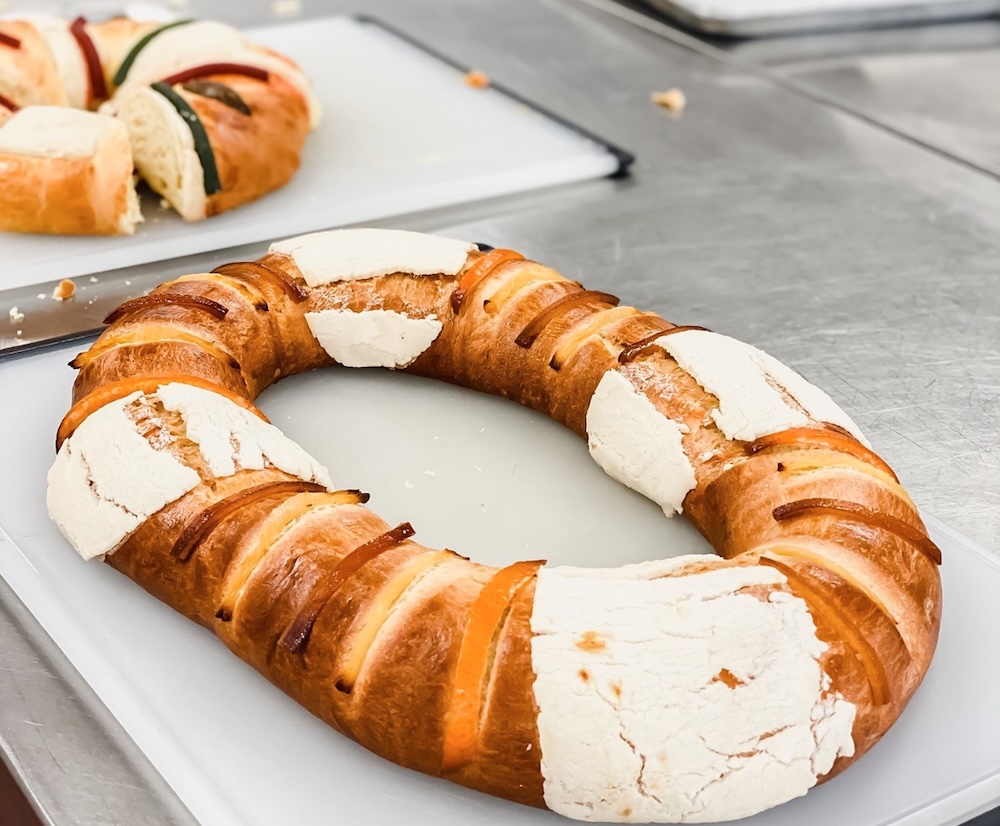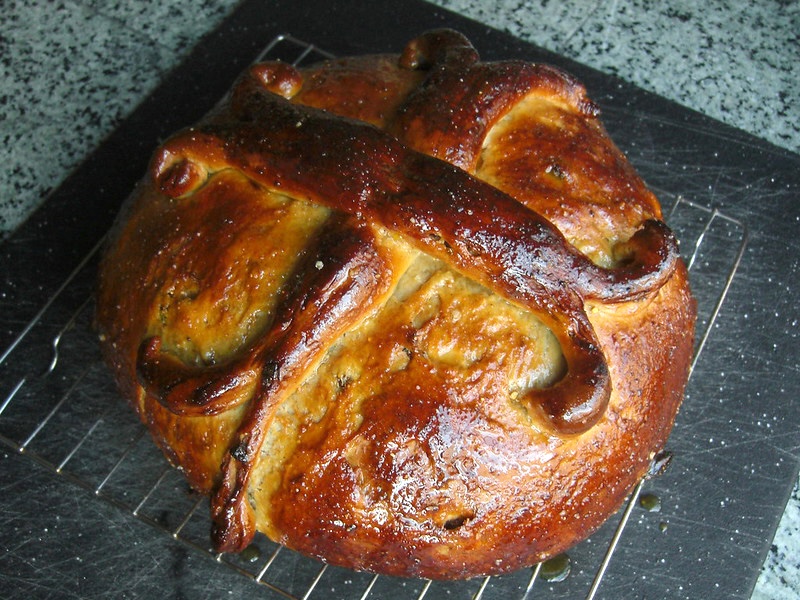All aboard the bread train!
At this time of year, festive breads woven with history and symbolism adorn tables throughout the world. From fluffy, fruit-studded Italian panettone to the golden challah of Jewish Shabbat, these breads are more than just delicious. Steeped in memory and ritual, they connect generations and cultures.
Whether braided, stuffed, or shaped in a ring, these six holiday breads from around the world provide a taste of global traditions.
Panettone
Italy’s Panettone is perhaps the most widely recognized holiday bread. That’s likely thanks to its colorful trapezoidal boxes, which are ubiquitous in supermarkets and department stores at this time of year.
Panettone, however, has history. While domed, fruited bread can be traced back to the Roman Empire, the modern version is often attributed to a Milanese baker named Toni. The story goes that Toni made this bread for his noble lord – who called it “pan de Toni.” A less animated attribution suggests it’s simply a variant of panetto, meaning “small loaf.”
Over centuries, it evolved from a simple bread to the decadent treat we recognize today, studded with candied fruits, raisins, and sometimes a hint of citrus zest. Lightly sweetened and often scented with rum or orange blossom water, Panettone’s standout quality is its light, fluffy texture and its impressive height. (It’s baked in a speciality paper sleeve.)
Related recipe: Panettone
Stollen

Stollen, a fruited holiday bread that originated in Germany, is more than delicious. It’s name-protected. This means that Dresdener Christollen – stollen’s full name – bears the mark of Protected Geographical Indication (PGI) from the European Union.
Even more interesting history: Hailing from Dresden in the 15th century as a simple bread for the Advent season, stollen evolved to its current form in the 17th century after the Pope allowed butter to be used for Advent baking.
Its unique shape and blanket of powdered sugar is said to evoke the swaddled baby Jesus. Stollen is made from a yeasted dough and frequently includes dried fruits, candied citrus peel, nuts, spices and marzipan. The dough itself is not overly sweet, but its powdered sugar coating and numerous inclusions make it a confection.
Challah
Synonymous with Jewish holiday meals throughout the year, challah is recognizable by its golden exterior and braided form, which is often sprinkled with sesame or poppy seeds. Its origin is believed to be Ashkenazi Jewish communities in Eastern Europe. The word challah can also refer to the practice of setting aside a portion of dough to give as a temple offering.
Challah is made from a yeasted dough enriched with eggs and lightly sweetened with either sugar or honey. (Its taste and texture are similar to brioche.) Of note, it’s one of only a few holiday breads that doesn’t include fruit or nuts. Still, it’s a decadent offering that signifies spiritual sustenance and abundance.
Related reading: How to Make Challah Bread
Fruitcake
Fruitcake is a rare holiday bread. That’s because it doesn’t include yeast. (In form, it’s essentially a quick bread.)

Its origins date back to ancient Rome, where honey, nuts, and dried fruit were frequently used in ceremonial cakes. However, as it traveled through Europe – particularly to England, where it enjoys its highest popularity – it evolved to become the dense, spiced version we recognize today. By the 16th century, it had become a Christmas and wedding day staple. Typically spiked with some kind of spirit, fruitcake has a long shelf life, which makes it ideal for baking ahead, gifting to friends, and enjoying throughout the holiday season.
Three Kings Bread (Rosca de Reyes)

Mexican Three Kings Bread, or Rosca de Reyes, is typically prepared for the feast of the epiphany on January 6. Originating in Spain, this sweet, ring-shaped bread made its way to Mexico during the colonial era. The round shape symbolizes a crown, while the hidden figurines inside represent the king’s gifts and the surprise of fate. It is similar both in shape and function to Mardi Gras King Cake in New Orleans.
Traditionally, Rosca de Reyes is adorned with candied fruits, which yields a colorful, jewel-like appearance that echoes its regal origins. The bread itself is lightly sweetened and enriched with butter, eggs and orange zest, offering a balance of richness and brightness. The tradition in Mexico is for friends and family to gather, cut slices, and share in the joy of the season — whoever finds the hidden figurine must host a party for Día de la Candelaria, or Candlemas, on February 2.
Christopsomo
Greek Christopsomo, or “Christ’s bread,” is a rich, aromatic bread that originated in the rural villages of Greece and is typically baked on Christmas Eve. Its round shape and cross etched on top – like a hot cross bun – is said to represent eternity. Often, its dough is infused with spices like cinnamon, cloves and orange zest, resulting in a fragrant, sweet bread.
Historically, the Christopsomo was baked by the head of the household, who would offer the first slice as a blessing for health, prosperity and protection in the coming year. Nuts, dried fruits, and even seeds are sometimes woven into the dough, reflecting the abundance of the season. It’s shared among family and guests as a symbol of unity and goodwill.







